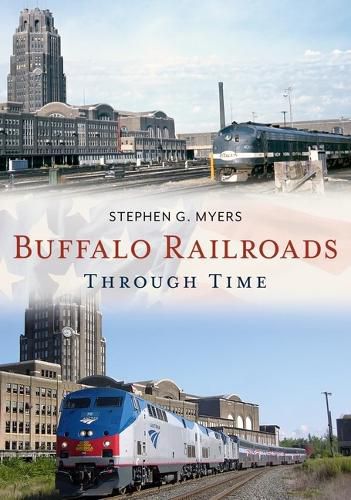Readings Newsletter
Become a Readings Member to make your shopping experience even easier.
Sign in or sign up for free!
You’re not far away from qualifying for FREE standard shipping within Australia
You’ve qualified for FREE standard shipping within Australia
The cart is loading…






The Buffalo, New York, area has gone through many changes throughout the years. With the Westward movement, Buffalo stood in the path to travel west and to travel north into Canada, making the area a natural transportation hub. From farmlands at the eastern edge of Lake Erie, Buffalo grew to be a mighty industrial city once the Erie Canal was completed and railroads made their way to the area. Commerce moved both east and west on trains while coal and grain transferred from ship to rail, and Buffalo was the center of activity. Factories rapidly built and expanded in the area, requiring natural resources to be transported in while the finished products rolled out. Railroad yards and shops were built to accommodate the business, making Buffalo the second largest railroad hub in the nation as several different railroad companies made their way into the city. Fine stations, luxury passenger trains, and a multitude of railroad companies vied for the booming business that was offered until time changed the scene. Highways, bigger trucks, automobiles, airplanes, and the completion of the St. Lawrence Seaway began to move rail traffic away from Buffalo. Deindustrialization of the region began and the term Rust Belt took hold as the local scene again changed. Through the changes, Buffalo survived and still is a vibrant railroad center. Here is a photographic look at Buffalo Railroads Through Time to see the changing scenes of railroading here in our great city.
$9.00 standard shipping within Australia
FREE standard shipping within Australia for orders over $100.00
Express & International shipping calculated at checkout
Stock availability can be subject to change without notice. We recommend calling the shop or contacting our online team to check availability of low stock items. Please see our Shopping Online page for more details.
The Buffalo, New York, area has gone through many changes throughout the years. With the Westward movement, Buffalo stood in the path to travel west and to travel north into Canada, making the area a natural transportation hub. From farmlands at the eastern edge of Lake Erie, Buffalo grew to be a mighty industrial city once the Erie Canal was completed and railroads made their way to the area. Commerce moved both east and west on trains while coal and grain transferred from ship to rail, and Buffalo was the center of activity. Factories rapidly built and expanded in the area, requiring natural resources to be transported in while the finished products rolled out. Railroad yards and shops were built to accommodate the business, making Buffalo the second largest railroad hub in the nation as several different railroad companies made their way into the city. Fine stations, luxury passenger trains, and a multitude of railroad companies vied for the booming business that was offered until time changed the scene. Highways, bigger trucks, automobiles, airplanes, and the completion of the St. Lawrence Seaway began to move rail traffic away from Buffalo. Deindustrialization of the region began and the term Rust Belt took hold as the local scene again changed. Through the changes, Buffalo survived and still is a vibrant railroad center. Here is a photographic look at Buffalo Railroads Through Time to see the changing scenes of railroading here in our great city.